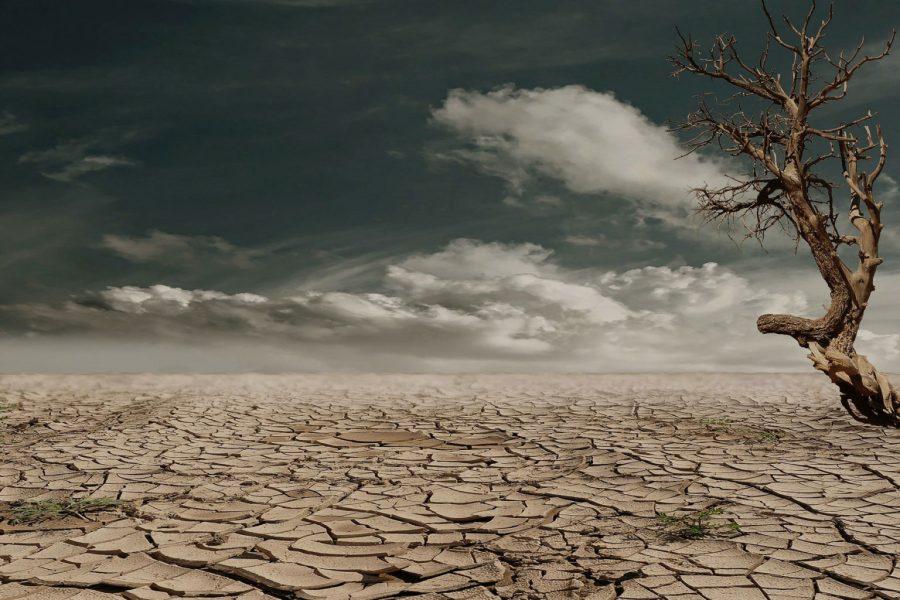With California experiencing a second dry year in a row, Governor Gavin Newsom officially declared a drought emergency in Sonoma and Mendocino counties on Wednesday, April 21. The rest of California, which has received lower than average rainfall during the past two years, may face drought conditions.
The drought emergency declaration encompasses the Russian River watershed which due to lack of rainfall in the region, has been experiencing very dry conditions. Governor Newsom attributed these conditions to the effects of climate change.
“What is different now is the extremes. What’s different now is the climate-induced impacts of these droughts,” Newsom said. “We’ve barely been out of those drought conditions and here we are, entering back into these drought conditions. Climate change is intensifying both the frequency and the severity of dry periods. This ‘new normal’ gives urgency to building drought resilience in regions across the state and preparing for what may be a prolonged drought at our doorstep.”
While the declaration only covers these two counties, the U.S Drought Monitor found that 90 percent of the state is currently experiencing drought conditions. Despite such conditions, state water officials believe that it’s too early for a statewide emergency declaration since other regions of California have not been heavily impacted yet.
A statewide drought declaration could result in widespread cutbacks in urban water use, such as restrictions on watering lawns. It is speculated that Newsom is hesitant to declare a state drought due to increasing criticism and a possible recall election later this year. Others have raised concerns that an early declaration of an emergency could make it difficult to convince Californians to conserve water if the drought lasts several years.
Other parts of the state are expected to declare drought emergencies later this week, including counties covered by the East Bay Municipal Utility District. The MUD expected to declare a stage 1 drought this week, resulting in a 10 percent voluntary reduction of water use districtwide.
Additionally, such dry conditions are likely to predict a more severe fire season this year. While wildfires depend on other factors such as dryness of vegetation — which serves as fuel for fire, temperature, and wind events — mapping dry areas can tell experts where fuel is located in preparation for the fire season.
“We should get ready for a very tough fire season,” Adam Kochanski, who leads the Wildfire Interdisciplinary Research Center’s fire modeling group at San Jose State University.
While UC San Diego has not been exposed to wildfires, the campus has implemented ways to cope with California’s dry conditions. UCSD uses recycled water for more than 25 percent of campus irrigation and has followed UC Sustainable Practices Policy in reducing campus drinkable water use by 36 percent by the year 2025. UCSD has also developed a Water Action Plan that outlines how they will implement such reductions.
When asked about any preparations the campus may be making for a possible statewide drought declaration, Leslie Sepuka, the Associate Communications Director for UCSD’s Resource Management & Planning responded with the following:
“In 2020, the campus reduced total water consumption by 17 percent, as compared to the previous year.” Sepuka said. “Through efforts like the Water Action Plan, the campus continuously strives to use water in the most efficient way possible, and would be ready to adjust in response to California and San Diego mandated water restrictions.”
California has been in a megadrought since 1999, which has only been interrupted periodically with above-average precipitation. Much of California’s water supply relies on the Sierra Nevada mountains, which gather snow and water during the winter months. However, a March 2021 survey showed only 60 percent of the snowpack is present.
In California, there has been a 50 percent increase in wildfires during the past few years, with a total of 8,122 fires happening in 2020 alone. San Diego is no exception to these wildfires. One of the largest fires in the county occurred in 2016 with the Border Fire which burned 7,609 acres and killed two people.
A report by the California Climate Change Center concluded that the warming of the San Diego region due to climate change will increase the intensity and frequency of wildfires in the future. The report also stated that according to recent trends, an additional 42 percent of California coastal shrub acreage will burn in the decade around 2050.
While the governor has yet to declare a statewide drought emergency, water conservation efforts may start as early as the summer. Information on how to prepare for drought can be found here.
Photo courtesy of Pixabay.
This article was edited on May 11 , 2021 at 12:17 AM to correct the wording for sentences in paragraphs 2 and 4.















Mann chaudhary • Jun 21, 2021 at 12:38 am
This is an awesome post for the user who wants to download the class 9th NCERT solutions free of cost.
https://fullncertsolutions.in/category/class-9-science/
Kyle Jonathan Chang • May 4, 2021 at 9:59 am
https://recallgavin2020.com/